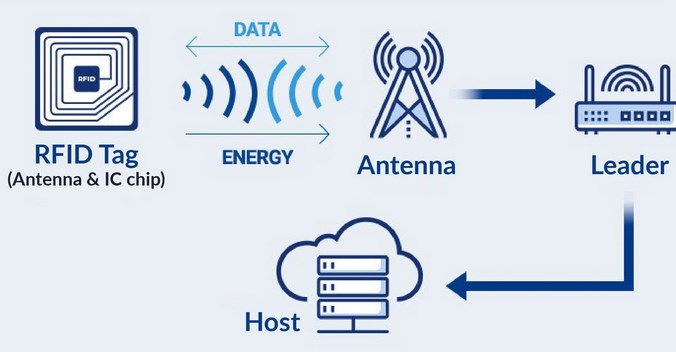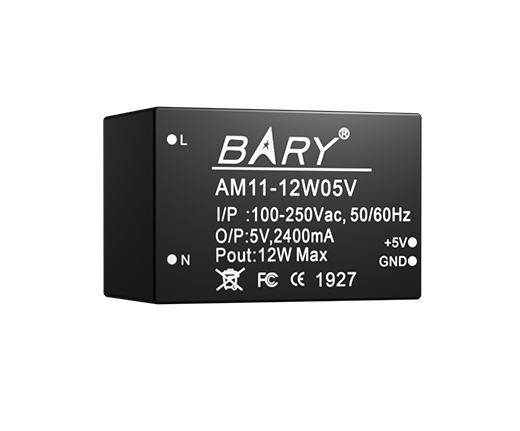

RFID technology has penetrated into many aspects of our daily lives, bringing more efficient, convenient and secure solutions to various industries. With the development of technology, RFID technology has been increasingly used and maintained rapid growth.
Article recommendation: Introduction to basic knowledge of RFID
Components of basic RFID systems:
The RFID system consists of three parts: RFID tag or smart tag, RFID reader and antenna.

Radio frequency identification communication principle:
RFID tags are used to transmit data to RFID readers, and then the RFID readers convert radio signals into usable data. The readers transmit the data obtained from the tags to the computer system through the communication interface, and the data can be stored in the database for future reference. We extract and use the data when we need it, and we can also connect the data interface to the smart screen, so that we can implement some real-time monitoring applications.
Comparison of RFID and LoRa radio frequencies
RFID (Radio Frequency Identification) and LoRa (Long Range Radio Frequency) are two different radio frequency technologies used in different applications and scenarios. Here are some comparisons between them:
1. Application areas:
RFID: Mainly used for short-range object recognition and tracking. Common applications include access control systems, logistics and supply chain management, library book management, etc.
LoRa: Mainly used for long-distance, low-power Internet of Things (IoT) applications. LoRa technology is commonly used in remote sensor networks, smart cities, agricultural monitoring and other fields.
2. Communication distance:
RFID: Usually works over shorter distances, typically between a few centimeters and several meters.
LoRa: Has long-range communication capabilities, which can reach several kilometers, depending on the environment and device settings.
3. Power consumption:
RFID: Generally has lower power consumption because it is mainly used for short-range communication and passive RFID tags do not require their own power source.
LoRa: LoRa devices are generally designed as low-power devices that can run for long periods of time and are suitable for battery-powered IoT devices.
4. Data transfer rate:
RFID: The data transmission rate is relatively low and suitable for the transmission of small amounts of data.
LoRa: It has high flexibility and can adjust the data transmission rate according to needs, and is suitable for a variety of different application scenarios.
5. Equipment complexity and cost:
RFID: RFID systems are generally relatively simple, especially passive RFID tags. The cost is relatively low.
LoRa: LoRa devices can be more complex because they need to handle more communication parameters and device settings. The cost is relatively high, but may be more economical when deployed on a large scale.
6. Multi-device connection:
RFID: Suitable for the identification of a single object. Multiple RFID devices communicating at the same time may cause conflicts.
LoRa: It has good multi-device connection capabilities and can support large-scale IoT device connections.
RFID systems are mainly divided into three types according to communication frequency:
Low frequency (LF) RFID: The low-frequency RFID system operates in the 120~150KHz frequency band. At the same time, the low-frequency RFID system has a short communication range (0.1 meters) and a slow data transmission rate, making it suitable for low-speed and short-range communication applications.
High Frequency (HF) RFID: High frequency RFID systems operate in the 13.56MHz frequency range and can communicate at a distance of up to 1 meter.
Ultra-high frequency (UHF) RFID: Its operating frequency range is 860~960MHz, and the communication range of the UHF RFID system can reach 12 meters.
Application scenarios of RFID technology
RFID technology has many traces in our daily lives. It is widely used in various applications, providing convenience, efficiency and security. Here are some common applications of RFID technology in daily life:
Access Control Systems: Many companies, schools, and public places use RFID access control systems where employees or students can easily enter a building or specific area using a card or tag with an RFID tag.
Payment systems: Some payment cards and mobile payment apps use RFID technology to allow users to complete transactions quickly and easily, such as public transportation cards, store purchase cards and mobile payment tags.
Library Management: RFID tags are used for the management of library books, allowing librarians to easily track and manage the borrowing, return and location of books.
Logistics and supply chain management: RFID is increasingly used in logistics and supply chains and can be used to track the location, transportation status and inventory management of goods to improve overall efficiency.
Retail Industry: In the retail industry, RFID tags can be used for inventory management, anti-theft and merchandise tracking. Customers can shop faster through self-checkout systems because RFID technology automatically identifies items.
Healthcare: The applications of RFID technology in the healthcare field include patient identification, drug tracking, medical equipment management, etc., improving patient safety and the quality of medical services.
Smart Cards and Authentication: RFID technology is widely used in smart cards for identity authentication, employee attendance, student cards, etc. This provides more secure and convenient access control.
Pet identification: RFID tags are embedded in pets' bodies, providing an effective way to identify and track pets, as well as store pet health information.







